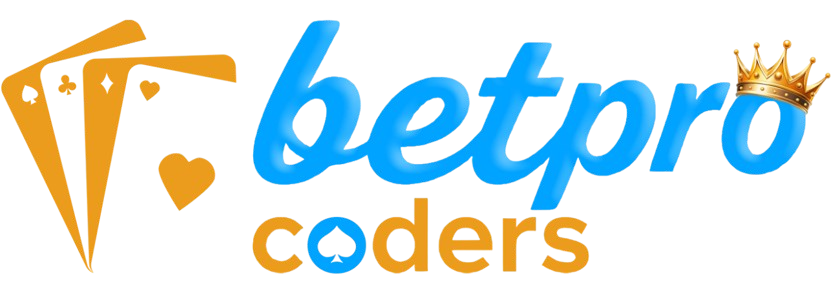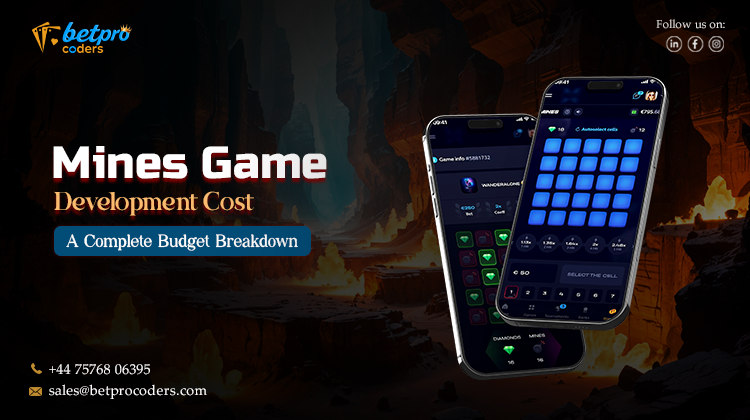The online gambling market is booming, and Mines gambling games have emerged as one of the most engaging and addictive formats. Popular for their simplicity, thrilling gameplay, and quick outcomes, these games are increasingly being featured on casino apps and platforms. Whether you’re a startup or an established gaming brand, launching a Mines Casino game can be a lucrative opportunity. However, one of the most pressing concerns for any developer or entrepreneur is understanding the Mines game development cost. This blog provides a complete game development cost breakdown tailored specifically to Mine Games apps, covering everything from development stages and hidden costs to platform impacts and monetization strategies. It also explores how to hire the right Mines game developer, implement cost-saving measures, and avoid common financial pitfalls. By the end, you’ll be well-equipped to build a winning Mines game within your budget.
Contents
Factors Influencing Mines Game Development Costs
Several key factors directly impact the total cost of Mines game app development. Let’s explore them in detail:
a. Game Complexity and Features
A basic Mines game includes a grid, mines, safe zones, and win/loss logic. However, adding features like user accounts, leaderboards, live chat, skins, difficulty levels, or real-money gambling significantly increases the complexity and cost. More complex mechanics or adding unique gameplay modes will require additional design, coding, and testing time.
b. Platform (iOS, Android, Web, or Cross-Platform)
Developing for a single platform (e.g., Android) will cost less than developing for multiple platforms (Android, iOS, and web). Native app development is more expensive than hybrid or cross-platform approaches. A Mines game app built using Flutter or React Native may offer savings by using a single codebase for multiple platforms.
c. Type of Game Engine Used
Game engines like Unity and Godot offer cost-effective solutions for building 2D Mines Casino games. Unity is particularly popular because of its robust support for mobile and web platforms. If you’re developing a 3D Mines game, engines like Unreal Engine may be better suited but typically cost more in terms of both development time and expertise.
d. Team Composition
The cost will differ based on whether you hire a freelancer, an in-house team, or an offshore game development agency. Hiring a Mines game developer for hire from a lower-cost region like Eastern Europe or Asia can significantly reduce your expenses while maintaining quality.
e. Design Requirements
Game design includes user interface (UI), user experience (UX), animations, graphics, sounds, and effects. Custom-designed 2D assets can still be costly, especially if you want a polished casino-style aesthetic. If you opt for 3D graphics or immersive animations, costs will increase accordingly.
f. Integration of Gambling Features
If you’re developing a Mines gambling game with real money betting features, the need for secure payment gateways, legal compliance, encryption, and anti-cheat mechanisms adds layers of complexity and cost.
Stages of Game Development and Associated Costs
Understanding the development lifecycle of a Mines game will help you break down and plan your budget more effectively. The development typically proceeds in three key phases:
a. Pre-Production (Planning & Conceptualization)
This stage focuses on idea validation, competitor research, feature planning, game flow mapping, wireframing, and creating a prototype or MVP design. It’s where strategic decisions are made.
- Activities Include: Requirement gathering, game design documentation, MVP definition, budgeting.
- Estimated Cost: $3,000 – $8,000
- Duration: 2–4 weeks
b. Production (Development Phase)
The bulk of the development work is done here. This includes programming the core game logic, integrating APIs, designing assets, testing functionality, and preparing for platform deployment.
- Activities Include: UI development, animation, game logic, front-end and back-end coding, payment integration, database configuration.
- Estimated Cost: $20,000 – $80,000
- Duration: 3–6 months
c. Post-Production (Launch & Maintenance)
Once the game is built, the post-launch phase includes quality assurance (QA), debugging, version updates, server monitoring, user feedback implementation, and marketing support.
- Activities Include: QA testing, analytics integration, app store optimization, regular updates, performance monitoring.
- Estimated Cost: $5,000 – $15,000 annually
- Duration: Ongoing
Read Also: Best Mobile Game Engines in 2025: Top Platforms for iOS & Android Development
Detailed Cost Breakdown of Mines Game Development
Here’s a granular game development cost breakdown for a typical Mines game:
| Cost Component | Cost Range (USD) |
| Game Design (UI/UX) | $3,000 – $10,000 |
| 2D/3D Asset Creation | $2,000 – $8,000 |
| Frontend Development | $5,000 – $20,000 |
| Backend Development | $7,000 – $25,000 |
| Game Logic Implementation | $5,000 – $15,000 |
| Third-Party API Integration | $2,000 – $8,000 |
| Payment Gateway Integration | $2,000 – $6,000 |
| Multiplayer Functionality | $8,000 – $20,000 |
| Testing & Quality Assurance | $3,000 – $10,000 |
| Deployment (App Stores/Web) | $1,000 – $3,000 |
| Maintenance & Updates | $5,000 – $15,000/year |
Total Estimated Cost: $30,000 to $100,000+, depending on scope, platforms, and complexity.
Cost-Saving Strategies
Developing a Mines Casino game doesn’t have to break the bank. Here are ways to reduce expenses without sacrificing quality:
1. Start with an MVP
Launch your Mines Casino game with only the core features—such as basic gameplay, scoring, and simple graphics—to test user interest. This lets you validate your concept quickly and reduce initial investment. Based on user feedback, you can gradually add more advanced features, improving your app without overspending upfront.
2. Use Pre-built Assets
Utilize existing libraries and asset marketplaces like Unity Asset Store or OpenGameArt to find high-quality icons, animations, and UI components. This saves weeks of design time and thousands in custom artwork costs. It also accelerates development and helps maintain visual consistency without the need for a full-time designer.
3. Choose Cross-Platform Frameworks
Frameworks like Unity, Flutter, or React Native allow you to build your game once and deploy it across iOS, Android, and web platforms. This eliminates the need to write separate code for each platform, saving both time and resources. It’s especially effective for startups with tight budgets.
4. Hire Offshore Developers
Hiring skilled developers from countries like India, Ukraine, or Vietnam can cut costs by 40–60% compared to Western markets. Offshore teams often deliver high-quality work at competitive hourly rates. Just ensure proper project management practices, clear documentation, and time zone alignment for smooth collaboration.
5. Opt for a White-Label Solution
A white-label Mines game app is a pre-built product you can brand as your own. It drastically reduces development time and cost while still allowing for custom design, theme, and feature adjustments. This is ideal for casino platforms looking to launch quickly without building from scratch.
For Free Consultation
Contact Number: +447576806395 Email: [email protected]
Hidden Costs in Game Development
Overlooking hidden costs can derail your project budget. Here’s what to watch for:
1. Licensing Fees
Some game engines or third-party tools require commercial licenses for extended usage, especially in revenue-generating games. These fees may be one-time or subscription-based and can vary based on the size of your team or revenue tier. Always check the licensing terms upfront to avoid legal complications or unexpected expenses later in the development cycle.
2. App Store Costs
Publishing your Mines game on platforms like the Apple App Store and Google Play comes with fees. Apple charges $99 annually, while Google charges a $25 one-time fee. In addition, app marketplaces may take a revenue share (typically 15–30%) from in-app purchases or subscriptions, so factor these deductions into your financial projections.
3. Server & Hosting
For online or multiplayer functionality, your Mines Casino game needs reliable hosting. Monthly cloud server costs can range from $20 to several hundred dollars depending on traffic, server location, and data needs. Multiplayer games also require real-time synchronization and database storage, increasing overall infrastructure demands and bandwidth usage.
4. Compliance & Legal Fees
Games involving real-money betting must comply with national and international gambling regulations. This includes acquiring licenses, age verification tools, encryption standards, and legal consultations. Costs vary by jurisdiction and can range from a few thousand to over $100,000 depending on the market you’re targeting (e.g., EU, US, or UK).
5. User Acquisition & Marketing
Even the best Mines game won’t succeed without users. Allocate funds for SEO, social media ads, influencer sponsorships, email campaigns, and affiliate partnerships. Marketing budgets can start at a few thousand dollars per month and scale up quickly depending on the channels used and audience reach you’re targeting for growth.
Tips to Optimize Development Cost
Cost efficiency isn’t just about cutting corners; it’s about smart planning and execution. Here’s how to do it:
- Plan Your Features Carefully: Prioritize must-have features first, and roll out enhancements later.
- Agile Development: Work in sprints and test each module before scaling.
- Automated Testing: Reduces manual QA costs in the long run.
- Use Version Control: Prevent costly mistakes with collaborative tools like Git.
- Analyze Player Data: Use analytics to improve retention and avoid wasteful spending on unused features.
- Partner With a Specialist: Work with agencies that have specific experience in Mines game development to reduce trial-and-error expenses.
Conclusion
Developing a Mines gambling game offers tremendous potential in the online gaming and casino industry. But to make the most of this opportunity, it’s essential to understand the true scope of the Mines game development cost. From planning and design to testing and post-launch support, each stage comes with its own set of expenses. A basic Mines game can cost as little as $30,000, while a fully-featured Mines Casino game with 3D graphics and multiplayer options could push beyond $100,000. Strategic planning, effective budgeting, and choosing the right Mines game developer for hire can go a long way in helping you launch a successful and profitable game. Whether you’re building for fun or profit, partnering with experienced teams such as BetPro Coders ensure your Mine Games app delivers both entertainment and value.
Frequently Asked Questions (FAQs)
Q1. What is the average cost to develop a Mines game?
Answer: The average cost ranges from $30,000 to $100,000, depending on platform, features, and team location.
Q2. Which factors influence the development cost of a Mines game?
Answer: Key cost drivers include game complexity, design quality, platform selection, use of third-party APIs, and multiplayer functionality.
Q3. What are the typical stages of Mines game development and their costs?
Answer: Development includes Pre-production ($3K–$8K), Production ($20K–$80K), and Post-production ($5K–$15K annually).
Q4. How much does hiring a development team cost?
Answer: Hourly rates range from $25/hour (offshore) to $150/hour (local), with total costs depending on the team’s size and experience.
Q5. What are the hidden costs in Mines game development?
Answer: Expect to pay for app store fees, server hosting, compliance licensing, marketing, and ongoing updates.
Q6. How long does it take to develop a Mines game?
Answer: Development time ranges from 3 to 8 months, depending on feature depth and platform support.
Q7. What is the most cost-effective strategy for developing a Mines game?
Answer: Use an MVP approach, hire offshore developers, and leverage existing tools and frameworks like Unity.
Q8. How does the platform affect the development cost?
Answer: Developing for multiple platforms increases cost. Web-based games are generally cheaper than native mobile apps.
Q9. How much does it cost to develop a Mines game with multiplayer features?
Answer: Adding multiplayer can increase your budget by $8,000 to $20,000, depending on complexity.
Q10. What are the ongoing costs after the game is developed?
Answer: Post-launch costs typically include server hosting, updates, bug fixes, and marketing—ranging between $5,000 to $15,000/year.
Q11. Can I reduce the cost of Mines game development?
Answer: Yes, by starting with a simplified MVP, outsourcing work, and using open-source or pre-built game assets.
Q12. How does the choice of game engine affect the cost?
Answer: Unity is more affordable for 2D Mines games, while Unreal Engine supports advanced 3D but incurs higher development costs.
Q13. What is the cost difference between 2D and 3D Mines games?
Answer: 2D games are 30–50% cheaper than 3D games, due to simpler graphics, animations, and rendering.
Q14. How much does testing and quality assurance (QA) cost for a Mines game?
Answer: QA usually costs between $3,000 and $10,000, depending on platform complexity and feature set.









Leave a comment